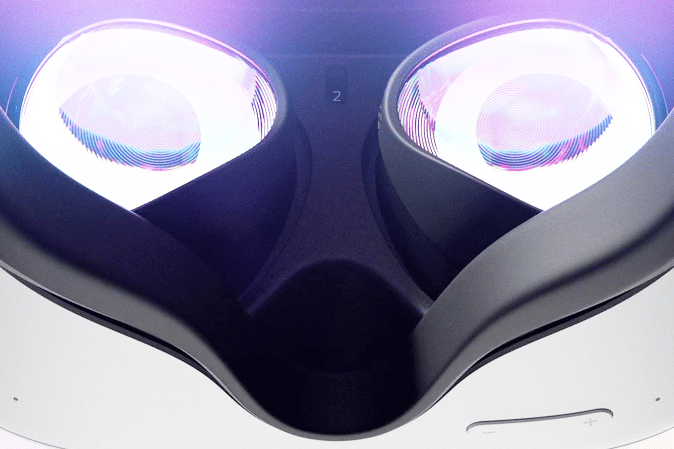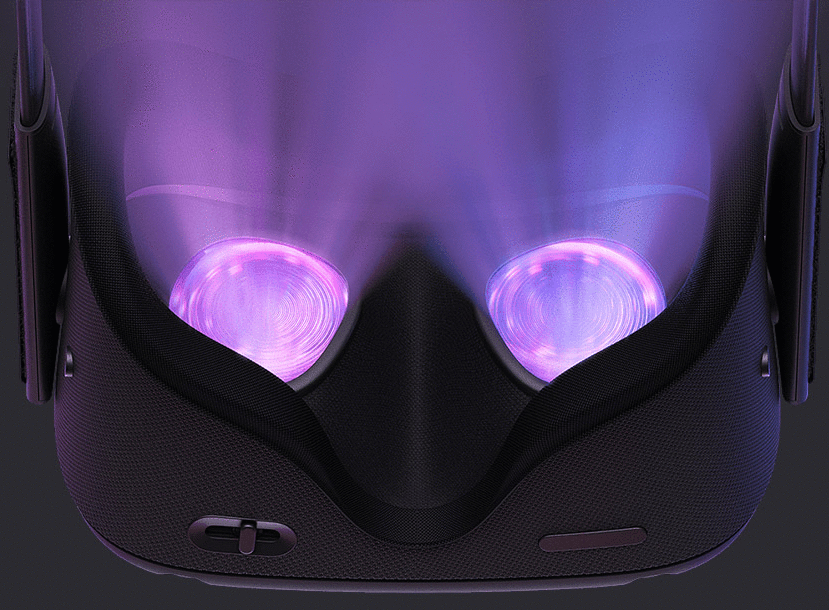Reliable sources confirm the new Oculus Quest features an adjustable system to fit the lenses to different eye distances.
The upcoming Oculus Quest, first leaked last week, has a new system for physically adjusting the lenses to your IPD (interpupillary distance). The current Oculus Quest uses the same kind of mechanism as the original Oculus Rift from 2016- a slider on the bottom side of the headset sets the lens separation. The new Quest exchanges the slider on the underside of the headset for a new system of directly moving the eye cups to put the lenses into three distinct positions.
Why does this matter?

The slider on the original Oculus Quest would let people adjust the position of the lenses (and panels) of the headset such that their positions match the center of their eyes. This can provide clearer visuals for some folks with eye distances that are outside the average.
Some people might return 2019’s Oculus Rift S, for instance, because it doesn’t feature this adjustment and their eye distances are so outside the average that the visuals delivered by the headset become uncomfortable. While I have a wider distance between my pupils than most, I find the Rift S design tolerable. Still, I prefer to use the Valve Index and Quest which each feature this adjustment. In some cases, then, mismatching a person’s IPD with the optical design of a VR headset might be thought of as analogous to wearing a wrong size shoe.
The original Oculus Quest slider offers millimeter by millimeter adjustment to this distance. The slider, however, might be hard for some folks to set right, and it could be forgotten entirely by others who don’t use VR very much. Might this system on the new Quest be easier to set appropriately? We’re not sure yet but a distinct numerical setting may be easier to remember than a value in millimeters and could encourage more people to adjust the lenses correctly before use.
On Friday, UploadVR staffer David Heaney wrote on Twitter to the original leaker of the new Quest asking for a closer view of the lenses. In a reply, the leaker provided the best view yet of the lens system showing space on the side of the eyecups where the lenses could be moved into a narrower position. The number “2” is displayed below where the proximity sensor usually sits on all other Oculus VR headsets. Our sources confirm there’s a wider setting as well for wider eye distances, making “2” the middle setting between “1” and “3”.
Unanswered Questions About The New Oculus Quest
While we can’t yet confirm other headset specifications — including the resolution or what kind of display panel it features — we believe Facebook is likely targeting a lighter headset as a top priority for this new Quest. The original Quest’s heaviness (1.25 pounds) could lead to headaches in a matter of minutes. Some even found the original Quest unwearable due to the amount of weight centered on the cheeks, forehead and nose, with accessories like the VR Power battery pack and modifications like the Frankenquest gaining popularity to better balance the load.
Earlier this year Bloomberg’s Mark Gurman reported Oculus was planning a new Quest with 20% less weight while exploring higher frame rates alongside new Touch controllers. Photos of both new Touch controllers and a slimmer Oculus Quest with a slightly new placement for the tracking cameras leaked late last week.



























